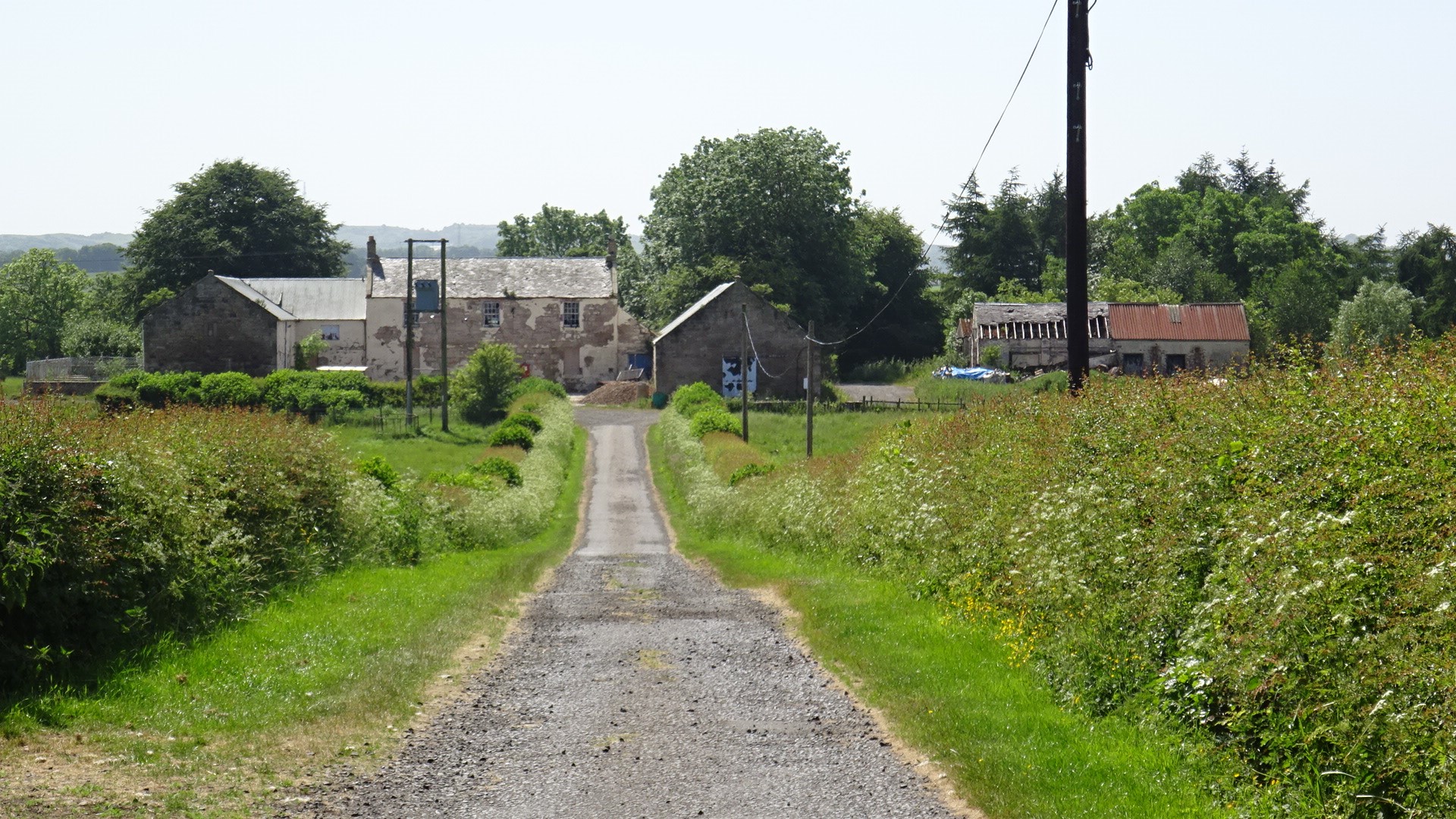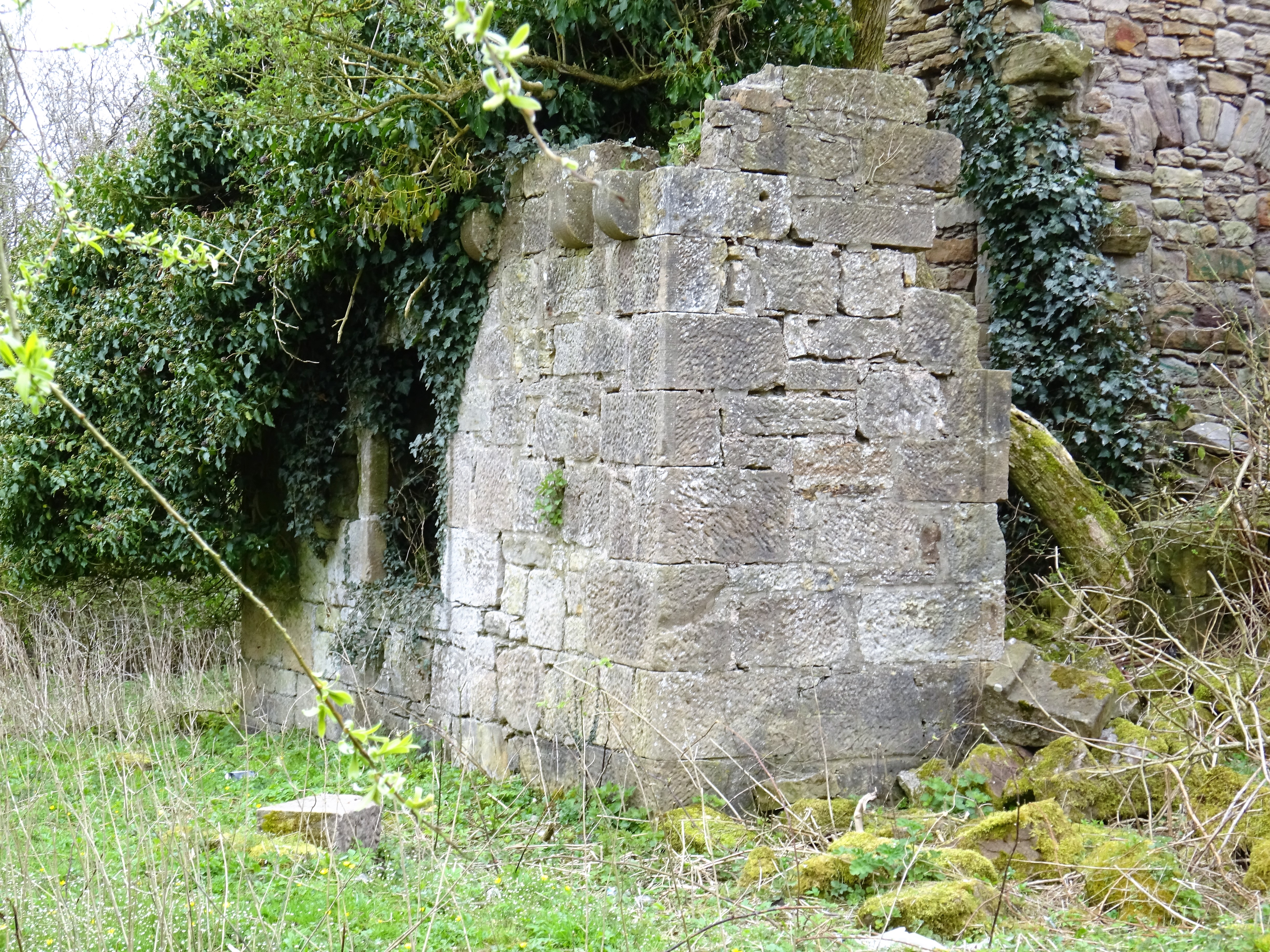|
Earlston, East Ayrshire
Earlston is a hamlet in Riccarton, East Ayrshire, Scotland. The habitation dates from at least the early 18th century and is near Caprington Castle and Todrigs Mill. It was for many years the site of a large sawmill and a mine pumping engine, and had sidings of the Glasgow and South-Western Railway's Fairlie Branch. History The present day name suggest a link with an earldom such as that of Dundonald or Glencairn, the latter holding the Barony of Caprington until 1683, however in the mid 18th century the spelling is recorded as 'Earle town' and in Scots this can also refer to a person who is hired "''To engage for service by payment of a sum''" and the expression 'earle-penny' was a "''A coin given as a token of engagement of service.''" Earlston may have been a place where dwellings were provided for Caprington estate workers, many of whom were hired annually at the Dudsday, also Duds' day, or Dud's day hiring fair, a holiday, held at Kilmarnock, originally held at Martinm ... [...More Info...] [...Related Items...] OR: [Wikipedia] [Google] [Baidu] |
East Ayrshire
East Ayrshire ( sco, Aest Ayrshire; gd, Siorrachd Àir an Ear) is one of thirty-two council areas of Scotland. It shares borders with Dumfries and Galloway, East Renfrewshire, North Ayrshire, South Ayrshire and South Lanarkshire. The headquarters of the council are located on London Road, Kilmarnock. With South Ayrshire and the mainland areas of North Ayrshire, it formed the former county of Ayrshire. The wider geographical region of East Ayrshire has a population of 122,100 at the last 2011 census, making it the 16th most populous local authority in Scotland. Spanning a geographical area of , East Ayrshire is the 14th-largest local authority in Scotland in terms of geographical area. The majority of the population of East Ayrshire live within and surrounding the main town, Kilmarnock, having a population of over 46,000 people at the 2011 census. Other large population areas in East Ayrshire include Cumnock, the second-largest town in terms of population and area, and ... [...More Info...] [...Related Items...] OR: [Wikipedia] [Google] [Baidu] |
Blacksyke Tower
The Blacksyke Tower, Blacksyke Engine House, Caprington Colliery Engine House or even Lusk's Folly is a Scheduled Monument associated with a double lime kiln complex in the Parish of Riccarton and is a building of national importance. The Blacksyke site is a significant survival of early coal and lime industries. The engine house's mock Gothic tower house style is very unusual and rare survival of its type. This late-18th-century engine house would be one of the oldest surviving examples of its kind in the United Kingdom. The track bed of the wagonway and several sidings that linked the complex with the Kilmarnock and Troon Railway can still be clearly made out. History In Scots a 'syke' is a small stream, often drying up in summer, that meanders through a hollow or across flat or boggy ground and the 'black' component may suggest peaty ground. A fair description of this low-lying area prone to flooding. The Blacksyke Tower A Newcomen atmospheric pumping engine may have been i ... [...More Info...] [...Related Items...] OR: [Wikipedia] [Google] [Baidu] |
Villages In East Ayrshire
A village is a clustered human settlement or community, larger than a hamlet but smaller than a town (although the word is often used to describe both hamlets and smaller towns), with a population typically ranging from a few hundred to a few thousand. Though villages are often located in rural areas, the term urban village is also applied to certain urban neighborhoods. Villages are normally permanent, with fixed dwellings; however, transient villages can occur. Further, the dwellings of a village are fairly close to one another, not scattered broadly over the landscape, as a dispersed settlement. In the past, villages were a usual form of community for societies that practice subsistence agriculture, and also for some non-agricultural societies. In Great Britain, a hamlet earned the right to be called a village when it built a church. [...More Info...] [...Related Items...] OR: [Wikipedia] [Google] [Baidu] |
Demolished Buildings And Structures In Scotland
Demolition (also known as razing, cartage, and wrecking) is the science and engineering in safely and efficiently tearing down of buildings and other artificial structures. Demolition contrasts with deconstruction, which involves taking a building apart while carefully preserving valuable elements for reuse purposes. For small buildings, such as houses, that are only two or three stories high, demolition is a rather simple process. The building is pulled down either manually or mechanically using large hydraulic equipment: elevated work platforms, cranes, excavators or bulldozers. Larger buildings may require the use of a wrecking ball, a heavy weight on a cable that is swung by a crane into the side of the buildings. Wrecking balls are especially effective against masonry, but are less easily controlled and often less efficient than other methods. Newer methods may use rotational hydraulic shears and silenced rock-breakers attached to excavators to cut or break through ... [...More Info...] [...Related Items...] OR: [Wikipedia] [Google] [Baidu] |
History Of East Ayrshire
History (derived ) is the systematic study and the documentation of the human activity. The time period of event before the invention of writing systems is considered prehistory. "History" is an umbrella term comprising past events as well as the memory, discovery, collection, organization, presentation, and interpretation of these events. Historians seek knowledge of the past using historical sources such as written documents, oral accounts, art and material artifacts, and ecological markers. History is not complete and still has debatable mysteries. History is also an academic discipline which uses narrative to describe, examine, question, and analyze past events, and investigate their patterns of cause and effect. Historians often debate which narrative best explains an event, as well as the significance of different causes and effects. Historians also debate the nature of history as an end in itself, as well as its usefulness to give perspective on the problems of the p ... [...More Info...] [...Related Items...] OR: [Wikipedia] [Google] [Baidu] |
Buildings And Structures In North Ayrshire
A building, or edifice, is an enclosed structure with a roof and walls standing more or less permanently in one place, such as a house or factory (although there's also portable buildings). Buildings come in a variety of sizes, shapes, and functions, and have been adapted throughout history for a wide number of factors, from building materials available, to weather conditions, land prices, ground conditions, specific uses, prestige, and aesthetic reasons. To better understand the term ''building'' compare the list of nonbuilding structures. Buildings serve several societal needs – primarily as shelter from weather, security, living space, privacy, to store belongings, and to comfortably live and work. A building as a shelter represents a physical division of the human habitat (a place of comfort and safety) and the ''outside'' (a place that at times may be harsh and harmful). Ever since the first cave paintings, buildings have also become objects or canvasses of much artist ... [...More Info...] [...Related Items...] OR: [Wikipedia] [Google] [Baidu] |
James Paterson (journalist)
James Paterson (18 May 1805 – 6 May 1876) was a Scottish journalist on numerous newspapers, writer and antiquary. His works are popular history, rather than scholarly. Life He was the son of James Paterson, farmer at Struthers, Ayrshire, where he was born on 18 May 1805; his father then had money troubles and gave up his farm. Paterson received an education, and then was apprenticed to a printer at the office of the Kilmarnock ''Mirror''. Subsequently he was transferred to the ''Courier'' office in Ayr. On completing his apprenticeship, Paterson went to Glasgow, where he joined the ''Scots Times''. In 1826 he returned to Kilmarnock, took a shop as stationer and printer, and in partnership with other gentlemen started the Kilmarnock ''Chronicle''. Its first number appeared on 4 May 1831, during the agitation for the Great Reform Bill, and the paper closed in May 1832. In 1835 Paterson left Kilmarnock for Dublin, where for some time he acted as correspondent of the Glasgow '' ... [...More Info...] [...Related Items...] OR: [Wikipedia] [Google] [Baidu] |
Glenfield (company)
Glenfield is a large industrial manufacturing company based in Kilmarnock, Ayrshire, Scotland. At its height it was reckoned to be the largest company of its type in the Commonwealth. Company history Thomas Kennedy (senior) was a watch and clockmaker, who moved to Kilmarnock in 1824 from Argyleshire. At around that time, he patented the Kennedy Water Meter, which he designed with the help of John Cameron, another watchmaker in Kilmarnock. A valve directs water entering the meter into a cylinder of known volume containing a piston. As the piston rises and falls, the measured quantity of water is expelled and the mechanism is connected to recording dials to track the volume of water used. In 1863, the Kennedy Patent Water Meter Co Ltd was established on a site formerly used by the Glenfield Printing Works. Two years later, Kennedy established Glenfield Co Ltd on the same site, which specialised in the supply of castings and general foundry work. Kennedy's nephew, also called Thomas ... [...More Info...] [...Related Items...] OR: [Wikipedia] [Google] [Baidu] |
National Museum Of Scotland
The National Museum of Scotland in Edinburgh, Scotland, was formed in 2006 with the merger of the new Museum of Scotland, with collections relating to Scottish antiquities, culture and history, and the adjacent Royal Scottish Museum (opened in 1866 as the Edinburgh Museum of Science and Art, renamed in 1904, and for the period between 1985 and the merger named the Royal Museum of Scotland or simply the Royal Museum), with international collections covering science and technology, natural history, and world cultures. The two connected buildings stand beside each other on Chambers Street, by the intersection with the George IV Bridge, in central Edinburgh. The museum is part of National Museums Scotland. Admission is free. The two buildings retain distinctive characters: the Museum of Scotland is housed in a modern building opened in 1998, while the former Royal Museum building was begun in 1861 and partially opened in 1866, with a Victorian Venetian Renaissance facade and a ... [...More Info...] [...Related Items...] OR: [Wikipedia] [Google] [Baidu] |
Newcomen Atmospheric Engine
The atmospheric engine was invented by Thomas Newcomen in 1712, and is often referred to as the Newcomen fire engine (see below) or simply as a Newcomen engine. The engine was operated by condensing steam drawn into the cylinder, thereby creating a partial vacuum which allowed the atmospheric pressure to push the piston into the cylinder. It was historically significant as the first practical device to harness steam to produce mechanical work. Newcomen engines were used throughout Britain and Europe, principally to pump water out of mines. Hundreds were constructed throughout the 18th century. James Watt's later engine design was an improved version of the Newcomen engine that roughly doubled fuel efficiency. Many atmospheric engines were converted to the Watt design, for a price which was based on a fraction of the fuel-savings. As a result, Watt is today better known than Newcomen in relation to the origin of the steam engine. Precursors Prior to Newcomen a number of smal ... [...More Info...] [...Related Items...] OR: [Wikipedia] [Google] [Baidu] |




.jpg)


.jpg)
